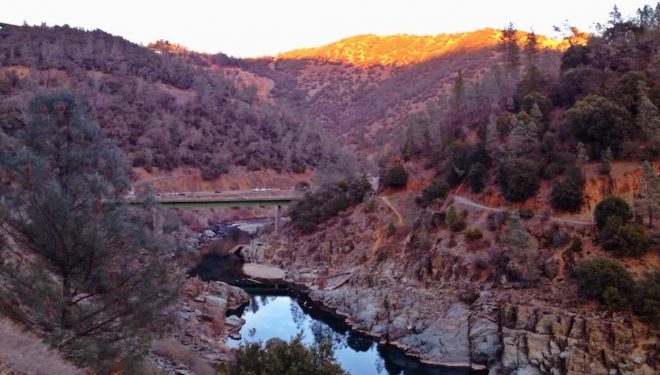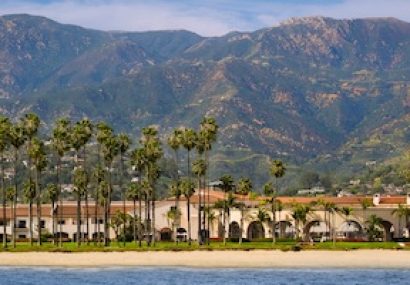
By Jamie Morin, Esq.
On December 14, 2023, a number of parties to pending litigation filed a Joint Motion to stay litigation through 2028 on the basis of a Memorandum of Understanding (MOU) entered between a subset of the parties including two states, four tribes and various NGO parties.
Background
A defining feature of the great Pacific Northwest is the mighty Columbia River, draining parts of six U.S. states and two Canadian provinces. The Columbia River and its tributaries including the Snake River, are also home to iconic salmon runs, anadromous species capable of traveling hundreds of miles in both fresh water and salt, first early in life to head out into the richness of the ocean to grow large and strong, then back into the headwaters of the Columbia River to spawn and die bringing nutrients into our ecosystems not only for the next generation of salmon, but for all life forms—human, animal and vegetation alike.
Pending Litigation
Litigation over operation of the Columbia River System has been pending in the District of Oregon since 2001, National Wildlife Federation v National Marine Fisheries Service (D. Or. 3:01-cv-640-SI). Parties to the litigation include but are not limited to: National Wildlife Federation, Pacific Coast Federation of Fishermen’s Associations, the Institute for Fisheries Resources, Sierra Club, Idaho Rivers United, Northwest Sport Fishing Industry Association, NW Energy Coalition, National Wildlife Federation, Columbia Riverkeeper, Idaho Conservation League, and Fly Fishers International, Inc., Columbia-Snake River Irrigators Association, States of Idaho, Montana, Oregon, and Washington, Confederated Tribes and Bands of the Yakama Nation, the Confederated Tribes of the Umatilla Indian Reservation, the Confederated Tribes of the Warm Springs Reservation of Oregon, the Nez Perce Tribe, Coeur d’Alene Tribe, Confederated Salish and Kootenai Tribes, and the Feds: US Bureau of Reclamation, Fish and Wildlife Service, and Army Corps of Engineers.
The current phase of the litigation was touched off when Supplemental Complaints were filed by various parties in 2021, as well as related petitions for review before the Ninth Circuit filed in 2021, 2022 and 2023, following issuance of Biological Opinions on Columbia River System Operations by US Fish and Wildlife Service and the National Marine Fisheries Service, and completion of an Environmental Impact Statement and Record of Decision by the US Army Corps of Engineers, the Bureau of Reclamation and the Bonneville Power Administration. The litigation has been stayed since 2021 while the parties pursued mediation using the Federal Mediation and Conciliation Service.
The Litigation Stay MOU
On December 14, 2023, a number of parties to the litigation filed a Joint Motion to stay litigation through 2028 on the basis of a Memorandum of Understanding (MOU) entered between a subset of the parties including two states, four tribes and various NGO parties. The MOU and joint Motion was preceded by a 20-year stay of claims in the Upper Columbia River Basin entered by the Coeur d’Alene Tribe, the Confederated Tribes of the Colville Reservation, and the Spokane Tribe of Indians with the US agreement to support and fund tribally led efforts to restore salmon to the blocked areas of the Upper Columbia River Basin. Following the Upper Basin Stay in September, President Biden issued a Presidential Memorandum on September 27, 2023, directing all relevant federal agencies to:
. . .work with the Congress and with Tribal Nations, States, local governments, and stakeholders to pursue effective, creative, and durable solutions, informed by Indigenous Knowledge; to restore healthy and abundant salmon, steelhead, and other native fish populations in the Basin; to secure a clean and resilient energy future for the region; to support local agriculture and its role in food security domestically and globally; and to invest in the communities that depend on the services provided by the Basin’s federal dams to enhance resilience to changes to the operation of the CRS, including those necessary to address changing hydrological conditions due to climate change.
The basis of the MOU is the Columbia Basin Restoration Initiative, a collaborative effort of the Confederated Tribes and Bands of the Yakama Nation, the Confederated Tribes of the Umatilla Indian Reservation, the Confederated Tribes of the Warm Springs Reservation of Oregon, the Nez Perce Tribe, the State of Oregon, and the State of Washington together with the so-called United States Government Commitments.
The Columbia River and its tributaries boast more than 60 dams of various ages and purposes and pressure on salmon stocks is basin wide, the current controversy focuses largely on the status of the four Lower Snake River Dams. The four Lower Snake River Dams located in Washington state were built between 1961 and 1975 to, in varying degrees, generate electricity, facilitate in-river transportation, mitigate flooding, and provide irrigation. Given that the habitat about the dams [mostly in Idaho] is described as “the largest accessible amount of pristine, protected habitat remaining in the Columbia Basin” by the mostly Washington and Oregon based parties to the Columbia Basin Restoration Initiative.
During the term of the MOU, the federal agencies agree to implement the USG Commitments which includes interim operations plan for the four Lower Snake River Dams and the four lower Columbia River dams. The Agreement provides for a ten-year term (unless shortened by congressional action authorizing and funding the breach of the four lower Snake River dams) during which time, the non-federal Parties agree to not seek injunctive relief to modify agreed Operations. The parties further agree to ongoing collaboration on salmon restoration in other areas of the basin consistent with the Columbia Basin Restoration Initiative.
The stated Objectives of the Columbia Basin Restoration Initiative are: (1) to develop and advance an urgent, comprehensive strategy to restore salmon and steelhead to “healthy and abundant levels” and complete the actions and investments necessary to secure continuity of services associated with Lower Snake River (LSR) restoration prior to LSR dam breaching; (2) to ensure that all species, regardless of ESA-listing status, are considered in the comprehensive strategy in a way that improves ecosystem function in the Columbia River and its tributaries; (3) to ensure interim fish measures minimize additional generational decline of fish populations; (4) to invest in and support communities and economic sectors (e.g., energy, transportation, agriculture, and recreation) in a manner that: is consistent with meeting decarbonization goals and mandates an integration of renewables; delivers “affordable and clean power”; improves resiliency and adaptability to climate change and supports “the many resilience needs of stakeholders across the region”; and “[honors] commitments to Tribal Nations”; (5) to secure necessary regulatory compliance, authorizations, and appropriations for implementation of the strategy proposed with an urgency reflecting the needs of the fish; and (6) to ensure that the strategy proposed “honor Federal commitments to Tribal Nations” and address past and ongoing inequities related to the federal hydro system to reflect and uphold federal Treaty and trust responsibilities to Columbia Basin tribes.
Conclusion and Implications
The Joint Motion for stay proposes to stay the litigation until 2028, with an optional additional five-year extension of the stay if the MOU remains in effect.
Opposition filings are due by December 29 2023, with replies by January 12, 2024. As of this writing, two parties have filed in Opposition to the Joint Motion—Inland Ports and Navigation Group and the State of Idaho.




